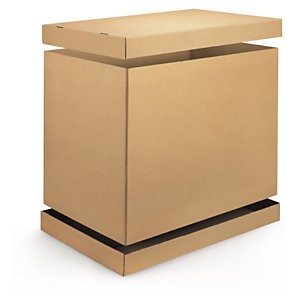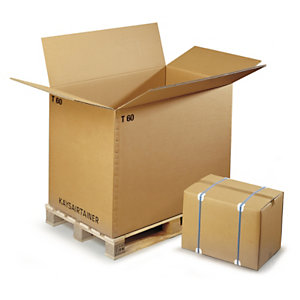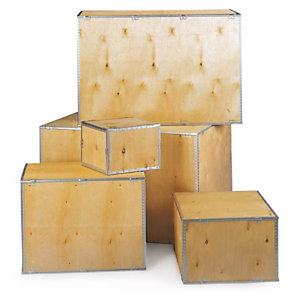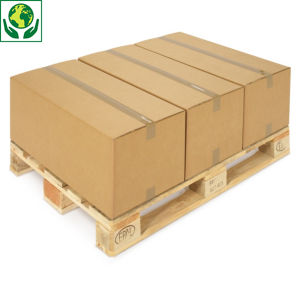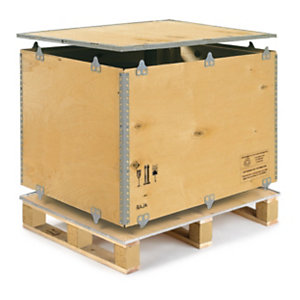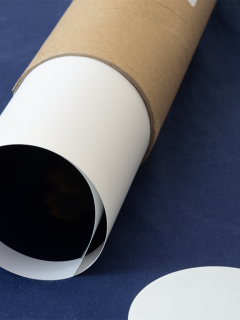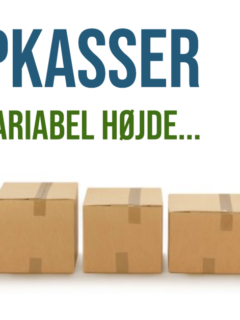Traders and merchants need to be able to export goods of all kinds in a secure and professional way – especially in this age of the corona, where the borderless nature of the web means that e-commerce is growing and growing.
In this post we’ll look at export packaging, the benefits of each and how you can design your own.
What types of export packaging?
In this day and age, the choice of export packaging has never been more important and the need for standard export packaging to stand the distance during transit is great.
Moving goods around the world can be a tricky business. The way the goods are packed is crucial to ensure they are properly protected from vibration, shock, dust, dirt, water and damage. Fortunately, we have a range of export boxes that can handle all of these requirements, depending on the contents. It ranges from Alm. cardboard boxes in various thicknesses to export quality cardboard boxes to wooden export boxes – the choices are many.
One thing to remember before looking at the various options is that when talking about export packaging solutions we need to take into account that much of global export shipping relies on standardised sizes. In the early days, the container ship model revolutionised the global world by putting everything in standard sizes. This allowed them to load and unload much faster and much more efficiently. The same applies to trucks and other transport – often goods are shipped on pallets where standard sizes are a must. Standard sizes are characterised by being pallet-adapted.
Export boxes VS export crates?
Perhaps you’ve heard of pallet boxes when we talk about exports? Tremmeboxes are more like wooden cages – unfortunately I don’t have a picture to show you, but with a quick google search, I found one here. An export box, on the other hand, is a real box with a lid and can be either cardboard or wooden, whereas a pallet box is seen more as “a pallet” and not quite a box. How and when to use these two boxes can be boiled down to one parameter: protection. As such, pallet boxes only surround the goods and do not protect against moisture, dirt, water, shocks, etc. – they have holes and are not as robust.
Clearly, the best option is to go for the kind of protection most distributors recommend, and that is a real box that encloses the goods – a traditional export box. Wooden export boxes, which we look at below, manage to provide solid and robust protection and are easily reusable. Cardboard export boxes offer the same kind of protection and, as well as being recyclable, can also be recycled and renewed.
Cardboard export boxes differ from your standard cardboard box in several parameters. For example, they need to be extremely strong and are therefore made from double or triple layer corrugated board, which can take loads of up to 500 kg.
These heavy-duty boxes are designed to export all kinds of goods, from lightweight items right up to metal parts, compressors, boilers, pumps, industrial tools and machinery, all of which meet international standards, plus they can be taped, palletised and stacked.


Plywood export crates
For long-distance exports involving road, rail, sea and air transport and/or the handling of very delicate goods, plywood crates are a particularly good and robust solution.
A plywood box is made of 6 mm plywood and is reinforced with a riveted steel edge – this together provides a very robust protection. Plywood is also not covered by the ISPM15 standard as it is not considered a plant material, which gives it an advantage as it can be shipped to all countries.
Plywood export crates protect against impact, heat, moisture, dirt, dust and they can also be stacked (depending on how heavy the goods are).
Another advantage of plywood boxes is that when not in use, they can be easily disassembled and stored flat. Which makes it easy to use the box again and again – in other words, a green alternative.
Palletised packaging for export
What does it mean for a box to be pallet-adapted? Palletised packaging is when the dimensions of a cardboard box are designed to fit on a Euro pallet, i.e. they will stack and sit next to each other without protruding.
A good tool when dealing with pallets is this pallet calculator, it can tell you how the pallet can best be loaded based on the box dimensions as well as how many boxes can be per layer (and if the box is not pallet adapted, you will quickly notice):
https://www.onpallet.com/index.php
Goods for export are almost always dependent on being able to be stacked and exported on pallets and in containers, and therefore should preferably be packed in packaging that has standard dimensions. When you pack in standard dimension packaging, your packaging can be distributed very easily and efficiently. They can be stacked and put on standardised pallets, which in turn can be stacked and fit into a standardised export container, which in turn can be stacked. Paper boxes should be double corrugated as they are strong enough for most palletising needs and are available in a host of standard sizes.
You can also get crates that come with their own pallet, as a fitting kit. Below you can see one option in plywood:
The connection between the pallet and the plywood box makes it easy to move it around. It is also recommended to use straps to secure the lid and further to secure the pallet for safety.
Another clever packaging option is pallet frames. With these frames, you can “build” your own box with a pallet as the bottom. If the goods are already ready on the pallet, you can easily “build” a secure plywood box around them by stacking the frames on top of each other. The pallet frames can be stored flat when not in use and have reinforced corners that make them easy to stack. Finally, just put a lid on and the pallet is almost ready.
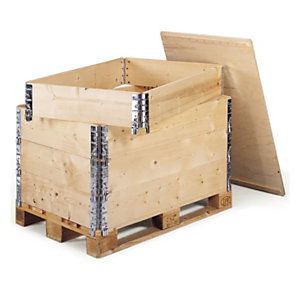
Want to know more about our wide range and export packaging options?
.. then either read more about export packaging or contact our specialists on 44 58 77 00 and together you can find the right solutions for your needs. You can also explore the website raja.dk











